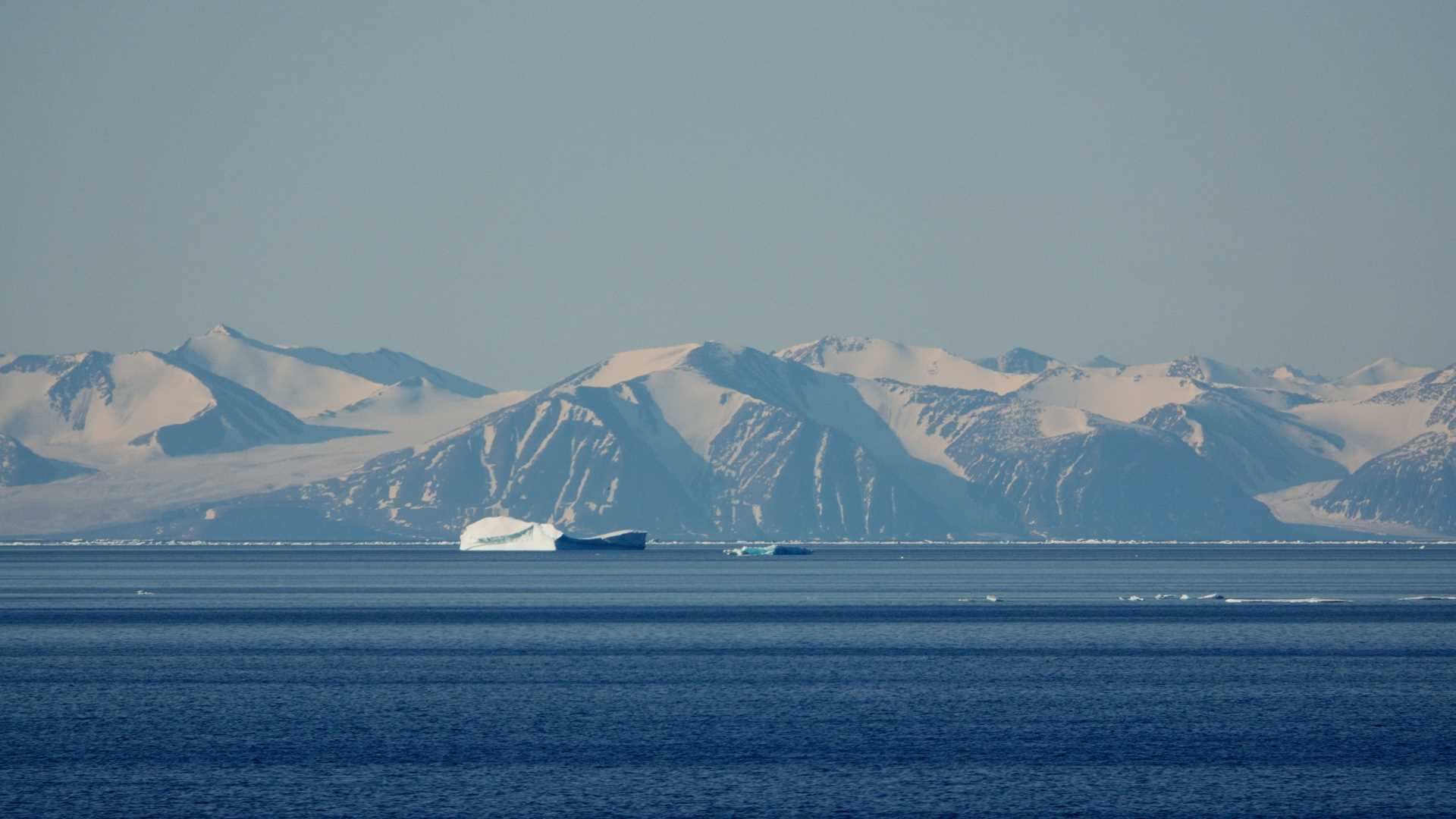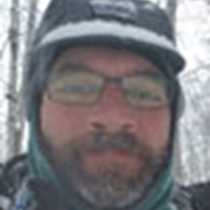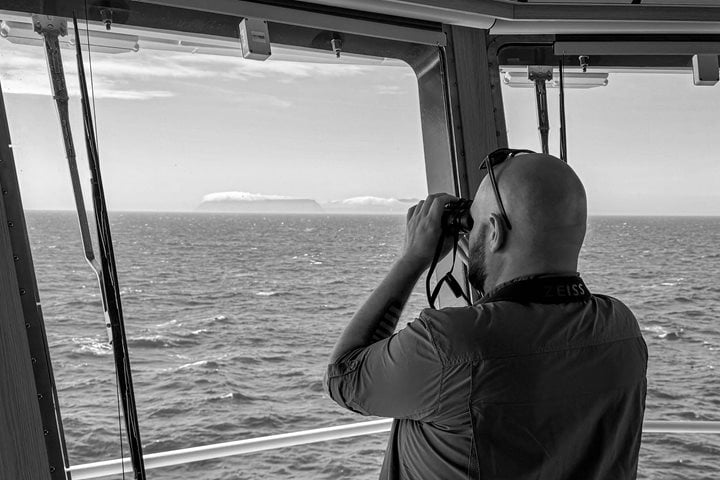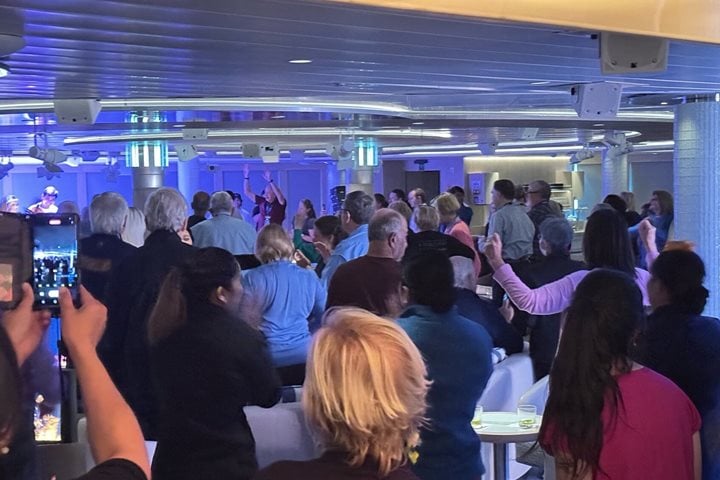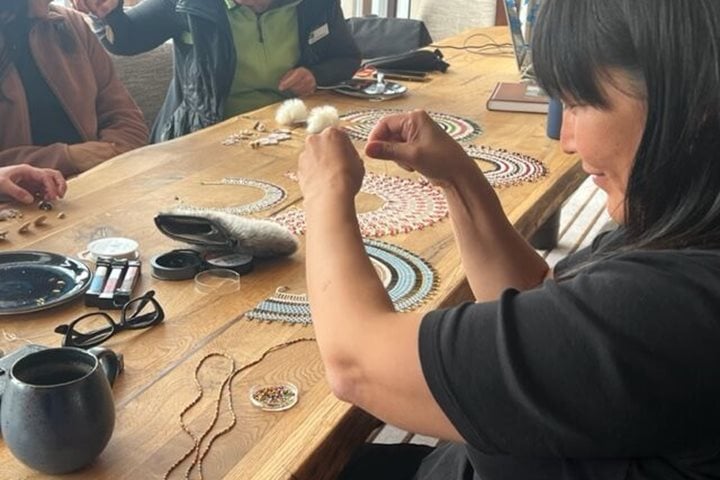Today was the day we officially began our journey through the Northwest Passage by entering its eastern entrance at Lancaster Sound, the body of water between Baffin Island and Devon Island, Nunavut. The passage over the top of North America was sought for centuries, and it holds many wonders and elicits much fascination for its navigation, cultural history, and the intrinsic beauty of the rich wildlife that calls the Arctic home. With patches of sea ice still present in the middle of the sound, we were able to spot four species of arctic seals: bearded, hooded, ringed, and harp seals used the remnant floes of ice. We also spotted a lone polar bear for a moment as it walked on the floe before it took to the water, likely in search of a more suitable platform to hunt from.
By early afternoon, we entered Croker Bay, a rather wide and deep fjord on the south side of Devon Island. With striking landscape on both sides of the fjord and two tidewater glaciers situated at the end of the bay, it invited us to set out in our fleet of Zodiacs to explore and get a more intimate introduction to this part of the Queen Elizabeth Islands. A significant amount of fast ice – ice held fast to the shore – was present in the western end of the fjord, and a myriad of icebergs and smaller pieces of glacial ice cast from the face of the glaciers littered the waters. As we cruised around, we spotted several harp seals spyhopping to get a better look at the strange black objects (Zodiacs) now in their environment. We were also graced by sighting several walruses hauled out on ice floes. They basked in the sun and appeared oblivious to our presence.
After our first full day in the Canadian Arctic, one can only wonder what’s in store for the rest of this incredible journey in the far north.

